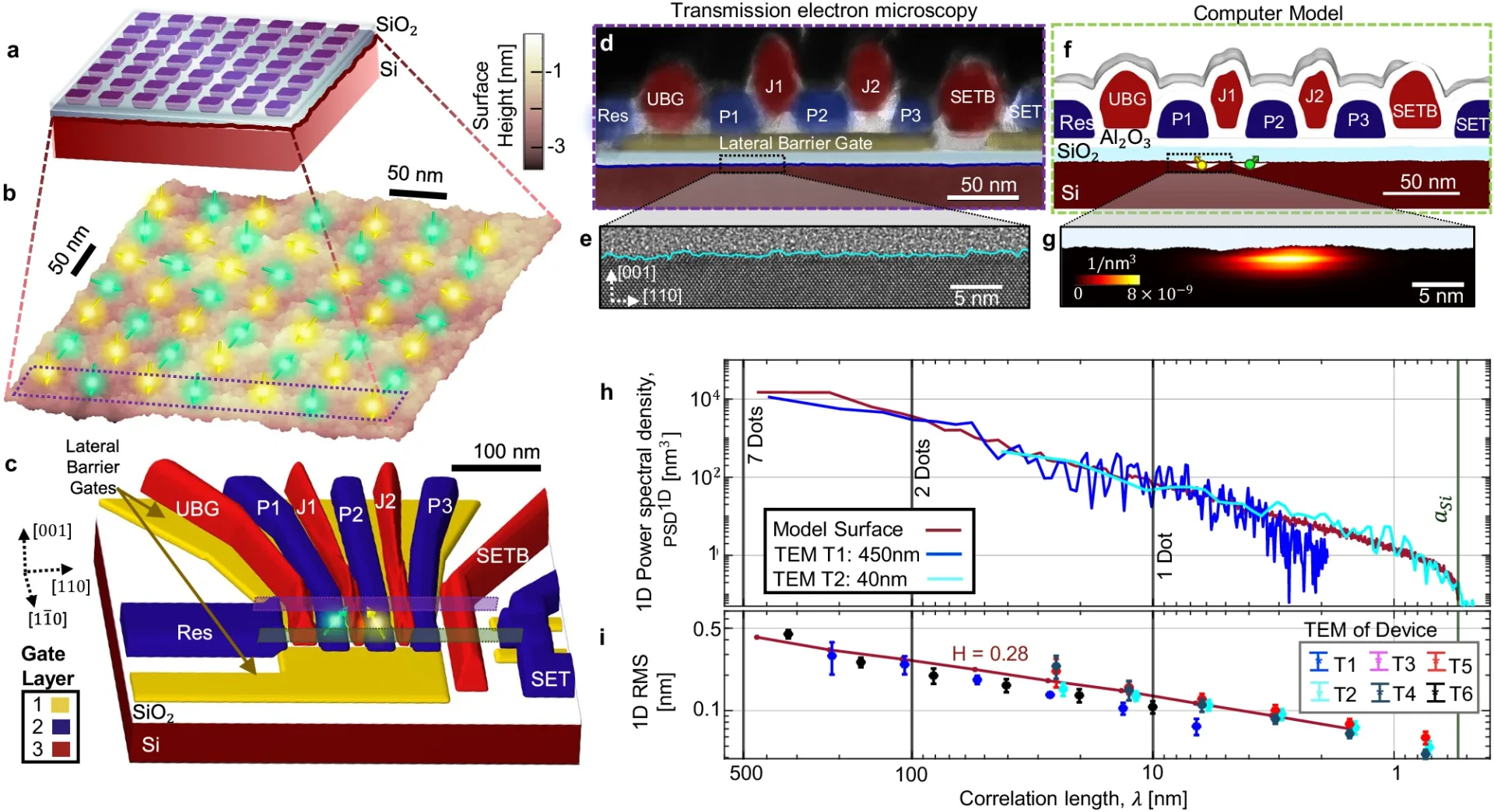A research team has studied the impact of atomic-scale roughness at the silicon-silicon dioxide (SiSiO2) interface on the performance of electron spin qubits in quantum computing. The team found that this variability can be managed within tolerances for scalable architectures, provided robust control methods are used. The research also highlighted the potential of silicon-based spin qubits in quantum technology, suggesting that the integration of manufacturing techniques used in semiconductor foundries could lead to more efficient and scalable quantum computing architectures. The findings underscore the need for a reassessment of the metrics defining the standard in microelectronics.
What is the Significance of Electron Spin Qubit Variability in Scalable CMOS Architectures?
The study of electron spins in silicon Metal-Oxide-Semiconductor (MOS) quantum dots is a rapidly evolving field, particularly in the context of quantum technology. These quantum properties, combined with scalable fabrication, have positioned silicon-silicon dioxide (SiSiO2) as a standard in microelectronics. However, as we move into the age of quantum technology, the metrics that have previously defined this standard need to be reassessed in terms of their impact on qubit performance.
The research team, including Jesús D Cifuentes, Tuomo Tanttu, Will Gilbert, Jonathan Y Huang, Ensar Vahapoglu, Ross C C Leon, Santiago Serrano, Dennis Otter, Daniel Dunmore, Philip Y Mai, Frédéric Schlattner, MengKe Feng, Kohei Itoh, Nikolay Abrosimov, HansJoachim Pohl, Michael Thewalt, Arne Laucht, ChihHwan Yang, Christopher C Escott, WeeHan Lim, Fay E Hudson, Rajib Rahman, Andrew S Dzurak, and Andre Saraiva, have charted spin qubit variability due to the unavoidable atomic-scale roughness of the SiSiO2 interface. This research involved compiling experiments across 12 devices and developing theoretical tools to analyze these results.
The team adapted atomistic tight binding and path integral Monte Carlo methods to describe fluctuations in devices with millions of atoms. This was achieved by directly analyzing their wavefunctions and electron paths, rather than their energy spectra. The effect of roughness was correlated with the variability in qubit position deformation, valley splitting, valley phase-spin-orbit coupling, and exchange coupling. The researchers found that these variabilities are bounded and lie within the tolerances for scalable architectures for quantum computing, as long as robust control methods are incorporated.
How Does the Silicon-Silicon Dioxide Interface Impact Quantum Technology?
The interface between silicon and its oxide is a key component of the technology that has enabled the digital era. It is one of the most studied materials in human history due to its practical process engineering advantages. The complex chemistry of silicon dioxide, combined with decades of research, has underpinned the development of the Complementary Metal-Oxide-Semiconductor (CMOS) industry.
As we approach a new era of quantum technology, this knowledge is largely considered a major advantage for technologies such as silicon-based spin qubits. The similarity between quantum dots defined by gate electrodes on top of a silicon-silicon dioxide interface and the MOSFET transistors in materials design and fabrication enables the integration of manufacturing techniques exclusive to semiconductor foundries onto the scaling of quantum processors.
However, the case of the silicon-silicon dioxide interface is specifically treated in this research. The team’s findings suggest that the atomic-scale roughness of the SiSiO2 interface, which is unavoidable, can impact the performance of qubits in quantum computing. This variability, however, can be managed and kept within tolerances for scalable architectures, provided that robust control methods are used.
What are the Implications of this Research for the Future of Quantum Computing?
The findings of this research have significant implications for the future of quantum computing. The study provides a deeper understanding of the variability in qubit performance due to the atomic-scale roughness of the SiSiO2 interface. This understanding is crucial for the development of scalable architectures for quantum computing.
The research also highlights the importance of robust control methods in managing this variability. This suggests that future advancements in quantum computing will not only depend on the development of new materials and technologies but also on the refinement of control methods.
Furthermore, the research underscores the potential of silicon-based spin qubits in quantum technology. The similarity between quantum dots and MOSFET transistors in materials design and fabrication could enable the integration of manufacturing techniques exclusive to semiconductor foundries onto the scaling of quantum processors. This could potentially lead to the development of more efficient and scalable quantum computing architectures.
In conclusion, this research provides valuable insights into the challenges and opportunities in the field of quantum computing. It highlights the need for a reassessment of the metrics that have previously defined the standard in microelectronics, in light of the advancements in quantum technology. It also underscores the importance of robust control methods in managing the variability in qubit performance, paving the way for the development of scalable architectures for quantum computing.
Publication details: “Bounds to electron spin qubit variability for scalable CMOS architectures”
Publication Date: 2024-05-20
Authors: Jesus Cifuentes, Tuomo Tanttu, Will Gilbert, Jonathan Y. Huang, et al.
Source: Nature communications
DOI: https://doi.org/10.1038/s41467-024-48557-x

